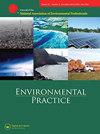评估可持续性的替代方案:NEPA中的定量分析
Q3 Social Sciences
引用次数: 0
摘要
摘要本文提出采用包括吞吐量在内的更新的可持续性概念,确定了1969年《国家环境政策法》(NEPA)中已经存在的可持续性原则,并呼吁美国环境保护署和环境质量委员会联合颁布新的法规。这些条例将强制对《国家环境政策法》备选方案进行定量分析,以期达到可持续性。还讨论了美国环保局在将可持续性纳入决策方面所做的努力。本文章由计算机程序翻译,如有差异,请以英文原文为准。
Assessing alternatives for sustainability: Quantitative analysis in NEPA
ABSTRACT This article proposes using an updated concept of sustainability that includes throughput, identifies tenets of sustainability already existing in the National Environmental Policy Act (NEPA) of 1969, and calls for the United States Environmental Protection Agency and the Council on Environmental Quality to promulgate jointly new regulations. These regulations would make the quantitative analysis of NEPA alternatives mandatory in an attempt to attain sustainability. Also discussed are the US EPA’s efforts at incorporating sustainability into decision making.
求助全文
通过发布文献求助,成功后即可免费获取论文全文。
去求助
来源期刊

Environmental Practice
ENVIRONMENTAL SCIENCES-
CiteScore
0.90
自引率
0.00%
发文量
0
期刊介绍:
Environmental Practice provides a multidisciplinary forum for authoritative discussion and analysis of issues of wide interest to the international community of environmental professionals, with the intent of developing innovative solutions to environmental problems for public policy implementation, professional practice, or both. Peer-reviewed original research papers, environmental reviews, and commentaries, along with news articles, book reviews, and points of view, link findings in science and technology with issues of public policy, health, environmental quality, law, political economy, management, and the appropriate standards for expertise. Published for the National Association of Environmental Professionals
 求助内容:
求助内容: 应助结果提醒方式:
应助结果提醒方式:


